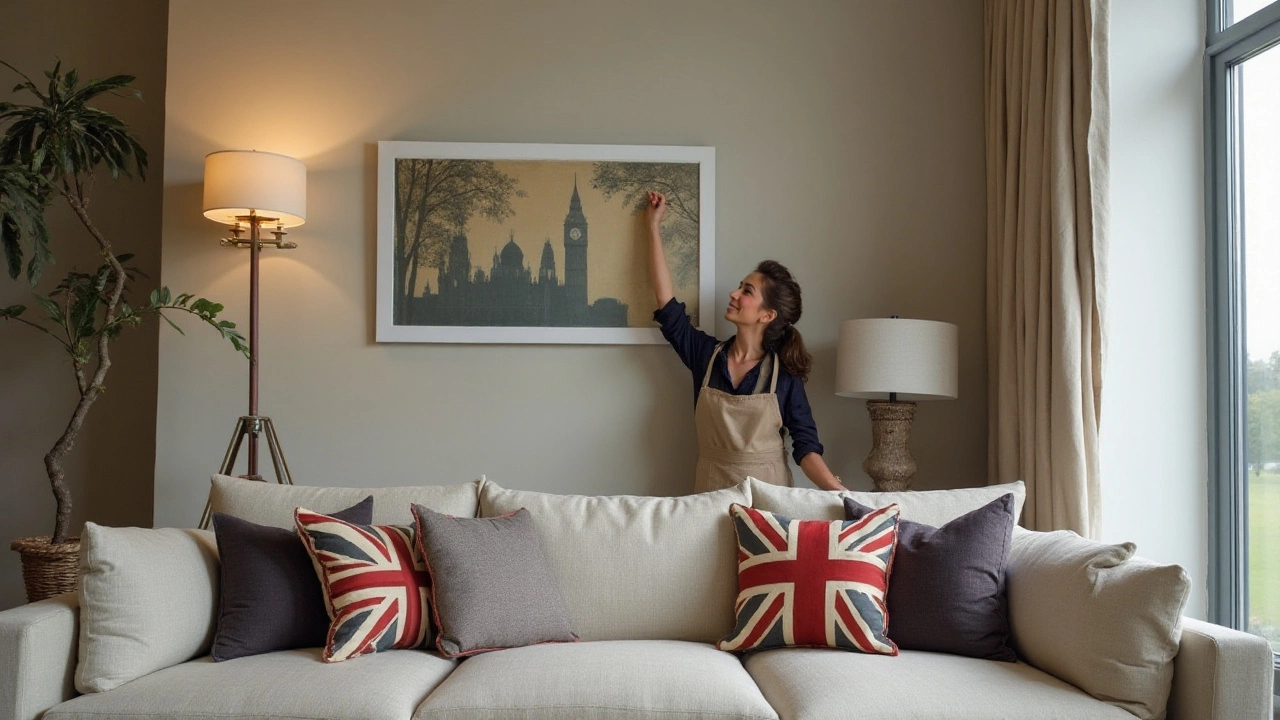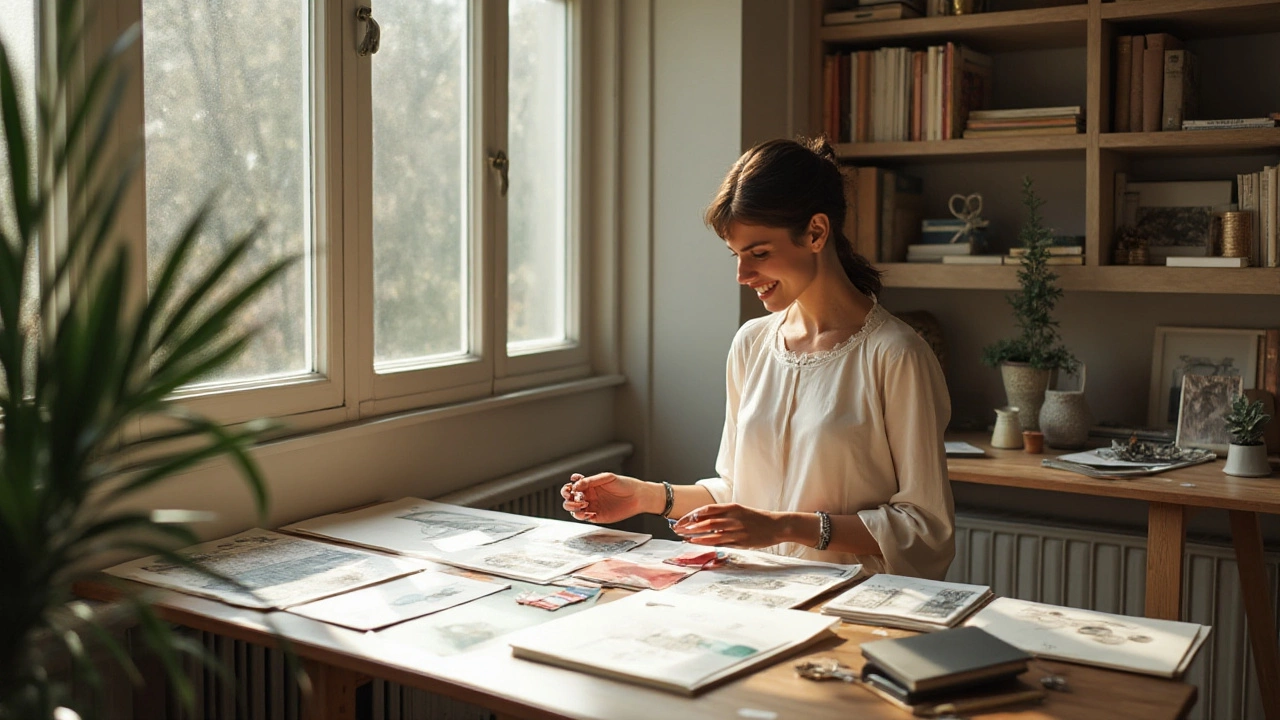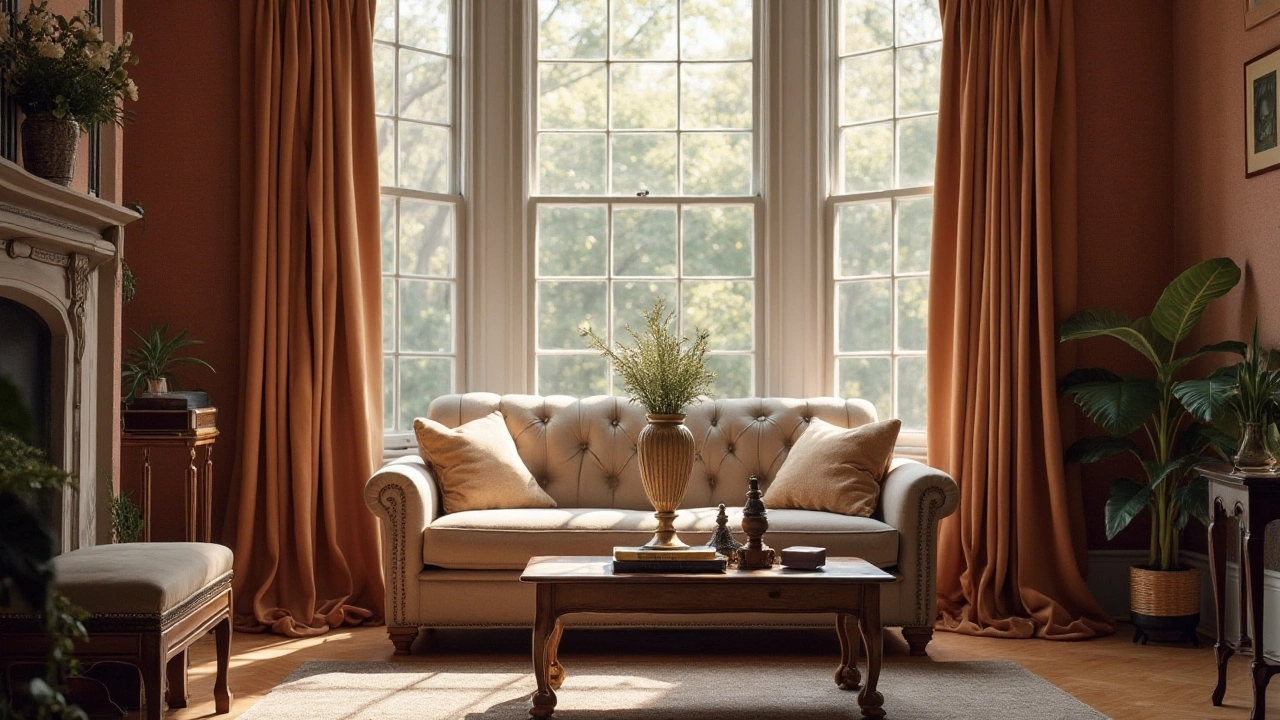Interior design isn't just about making spaces look good; it's about transforming environments to enrich the lives of the people who use them. As of 2024, the profession has evolved to address more than aesthetic concerns, focusing equally on sustainability, functionality, and technology integration.
For many, deciding to embark on a career in this exciting field is driven by a passion for creativity and a desire to make a tangible impact on living and working spaces. The world of interior design offers varied paths; you could find yourself working on residential projects, commercial establishments, or even stage and set designs.
Like any career, interior design comes with its challenges - from keeping up with trends to managing client expectations. However, with the right skills and education, the rewards of this creative journey can be substantial. This article breaks down these aspects, offering insights into what it's really like to work in interior design and whether this career path is worth pursuing.
- Career Paths in Interior Design
- Necessary Skills and Education
- Challenges of the Industry
- Rewards of Pursuing Interior Design
Career Paths in Interior Design
Embarking on a career in interior design presents a world of opportunities as varied as the interiors designers work on. While many people envision design work as solely about choosing fabric swatches and furniture, the reality is so much more diverse. Interior designers have the chance to specialize in specific sectors or even branch out into related fields. Design industry professionals might find themselves involved in residential projects, creating warm, functional, and beautiful homes. Alternatively, they might venture into commercial design, focusing on everything from chic office spaces to bustling restaurants and hotels. Each path comes with its unique set of challenges and skills, but they all share a common goal: enhancing environments to improve people's lives.
Residential design is often where many aspiring designers start. This path allows designers to work closely with homeowners, bringing their vision to life within the constraints of a personal budget and space requirements. Working in residential design requires a strong understanding of both aesthetics and practicality, ensuring spaces are not only beautiful but also livable. Moreover, designers must have a knack for understanding clients' needs and preferences to truly capture the essence of their desired outcome. On the other hand, a career in commercial design tends to demand a keen understanding of branding and functionality. Here, the goal is often to create spaces that not only look stunning but also serve a specific business purpose – whether it be impressing clients or facilitating a productive work environment.
“Good design is all about making other designers feel like idiots because that idea wasn’t theirs.” – Frank Chimero, the veteran designer.
Beyond residential and commercial sectors, interior designers can explore niche areas like set design, where they craft the visual ambiance for films and theater, or exhibit design, which involves creating engaging displays for museums or trade shows. These roles require both creativity and meticulous planning, with designers needing to balance artistic vision with logistical constraints, such as time and budget limits. Another sought-after area is sustainable design, which focuses on creating environmentally friendly spaces. Here, designers integrate eco-friendly materials and practices to lessen the environmental impact, answering the increasing public demand for sustainability in all aspects of life.
Innovative technologies have added another dimension to interior design careers. Virtual reality and 3D modeling, for instance, are transforming how designers communicate ideas and plan projects. These tools allow clients to experience their potential spaces as never before, eliminating much of the guesswork typically associated with design projects. Given this landscape of opportunities, those passionate about interior design have a plethora of paths to pursue, ensuring that no two career journeys are identical. It often helps for aspiring designers to remain open to various roles throughout their careers, exploring different industries and specializations to refine their skills and discover what truly excites them.

Necessary Skills and Education
Embarking on a journey in the field of interior design calls for a blend of artistic flair and technical acuity. It all begins with a solid educational foundation. Prospective designers often pursue a bachelor's degree in Interior Design or an associated field, which typically takes around four years. Some may opt for shorter certification programs, but a degree not only provides comprehensive knowledge of design principles but also covers crucial aspects like space planning, materials, and computer-aided design (CAD).
Understanding architecture basics and environmental psychology is just the tip of the iceberg. Interior designers must have a keen eye for detail, balance, and proportion, ensuring each element in a space complements the whole. Strong interpersonal skills are essential, as working closely with clients, contractors, and other professionals is a regular part of the job. Effective communication can make or break a project, ensuring everyone involved shares a unified vision.
Designers also need to stay adept in the latest software platforms, such as AutoCAD, SketchUp, and Revit, which aid in crafting precise and imaginative layouts. An impressive portfolio is a designer's calling card, showcasing not just versatility but also stylistic evolution and problem-solving prowess. A solid grasp of sustainable practices is becoming increasingly important as the industry shifts towards environmentally friendly solutions. Learning to make eco-conscious choices about materials and design solutions can markedly enhance a designer's career prospects.
"Design is not just what it looks like and feels like. Design is how it works." – Steve JobsBalancing functionality with aesthetics is a core principle in the field. Aspiring interior designers should also be prepared for continuous learning. This could involve workshops, certification programs, or professional designations such as becoming licensed through the National Council for Interior Design Qualification (NCIDQ). Staying updated with the latest trends, technological advancements, and best practices is vital for career growth. Every designer develops a signature style over time, but the ability to adapt to specific client needs will mark a truly successful career.
The blending of creative thinking and technical skills makes a career in interior design both challenging and rewarding. The industry requires designers who are not only creative artists but also pragmatic experts who can marry client dreams with realistic projects. This duality is at the heart of what makes this profession so appealing, providing endless opportunities for growth, innovation, and personal satisfaction.

Challenges of the Industry
The interior design industry, while offering numerous opportunities for creativity, presents a unique set of challenges that professionals must navigate. These challenges often go beyond just selecting the right color palette or furniture. One such challenge is staying ahead in an ever-evolving field where trends can change almost overnight. Designers must continuously educate themselves about new materials, sustainable practices, and technological advancements to remain relevant. This constant need for learning can be daunting, but it's essential for success. Additionally, every designer must learn the art of balancing aesthetics with practicality. It's not enough for the design to look good; it must function well in the space for which it is intended.
Another significant hurdle is managing client expectations. Interior designers work with diverse clients, each with distinct tastes, budgets, and timelines. Successfully translating a client's vision while sometimes gently steering them towards feasible and tasteful choices is a skill that can only come with experience. It requires excellent communication, empathy, and negotiation skills. Additionally, there's often a financial challenge, especially for those starting out, in agreeing on budgets that satisfy both the client’s aspirations and the designer’s professional interests. Working on tight budgets can enforce innovative thinking, but also adds pressure to deliver exceptional results without compromising on quality.
“Design is not just what it looks like and feels like. Design is how it works.” - Steve Jobs
Finding a work-life balance is another challenge faced by many in the field. Designers often work long, irregular hours to meet deadlines or to coordinate with other professionals such as architects, contractors, and suppliers. This can lead to stress and burnout if not managed properly. For those running their own interior design firms, the extra responsibilities of managing a business, like marketing, accounting, and client management, can add to the stress. Despite these challenges, many find ways to balance their personal and professional lives by setting boundaries and practicing effective time management.
Market competition poses its own threat, particularly in metropolitan areas where the demand for interior design is high. Designers must find ways to differentiate themselves from numerous peers. Often, building a strong portfolio and relying on word-of-mouth referrals can help. However, establishing a niche, such as sustainable design or historic restorations, can further differentiate a designer from the competition. Embracing technology, such as 3D modeling software and virtual reality, can also provide an edge by allowing clients to visualize designs in a way that sets a designer apart.

Rewards of Pursuing Interior Design
For those drawn to the art of shaping environments, a career in interior design offers unparalleled satisfaction. Imagine the joy of transforming a bare room into a vibrant, functional space that captures a client’s personality or meets their business needs. The profession not only nurtures creativity but also allows designers to witness their ideas come to life—a unique blend of art and function that few careers can match. Across Melbourne, for example, successful interior designers have contributed significantly to the city’s modern charm, blending heritage with innovation in unique ways. This everyday interplay of creativity and impact is why the field remains rewarding, attracting numerous passionate individuals.
Beyond the artistic satisfaction, interior design offers financial stability and opportunity. According to recent industry reports, the demand for interior designers is steadily increasing due to the growing emphasis on workspace aesthetics and comfortable residential environments. The Bureau of Labor Statistics anticipates a growth rate that opens doors for new designers eager to stake their claim. The job's versatility also provides options to specialize in various niches like sustainable design or commercial interior planning, each with its financial benefits.
There's also the psychological reward of making a difference in people’s daily lives. Good design enhances functionality and promotes well-being by carefully considering light, color, and material flow. As one satisfied client once put it in a Melbourne design forum, transforming her space had drastically improved her mood and productivity. This personal impact is a significant reward that keeps many in this field passionate about what they do.
Moreover, the freedom associated with a career in interior design is a massive draw. Whether you’re freelancing or running your design firm, you're in control of your projects, clients, and creative vision. This autonomy is a rare commodity in today’s job landscape, offering a work-life balance that aligns with personal values and lifestyle preferences. In fact, a majority of interior designers express satisfaction with their ability to manage commitments flexibly, making this profession not just creatively fulfilling but also adaptable to diverse life circumstances.
"Design is not just what it looks and feels like. Design is how it works." – Steve Jobs





